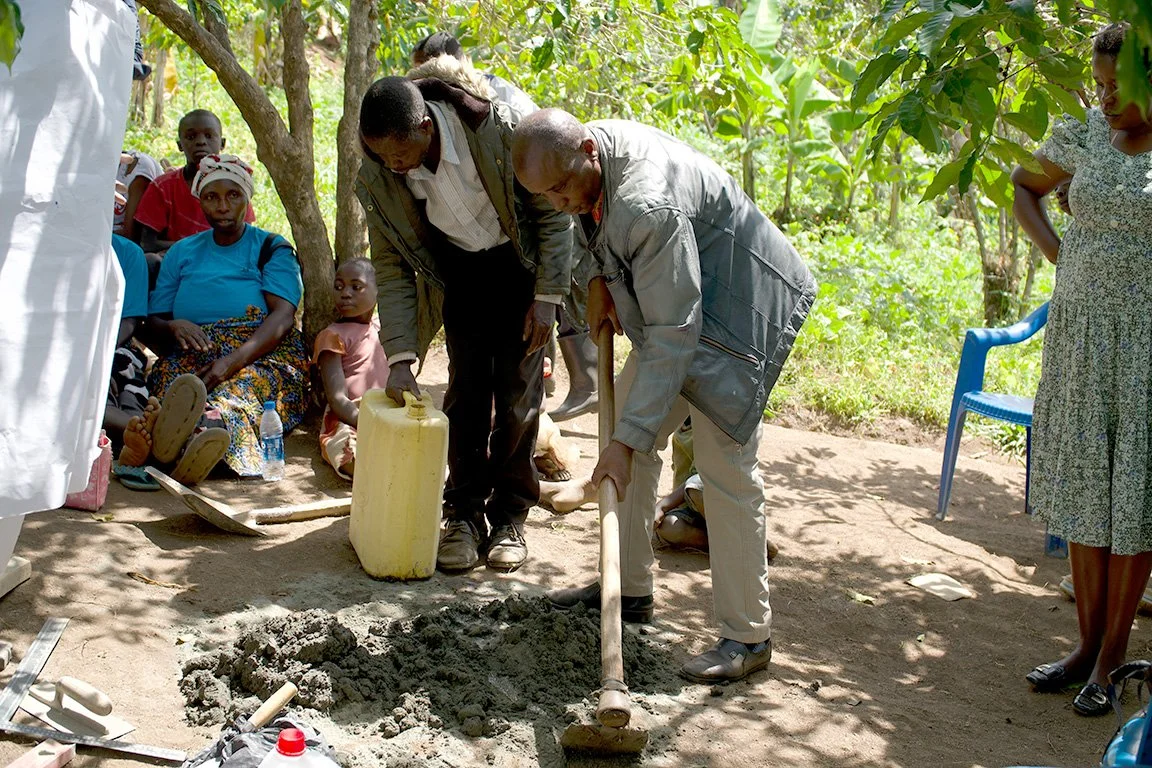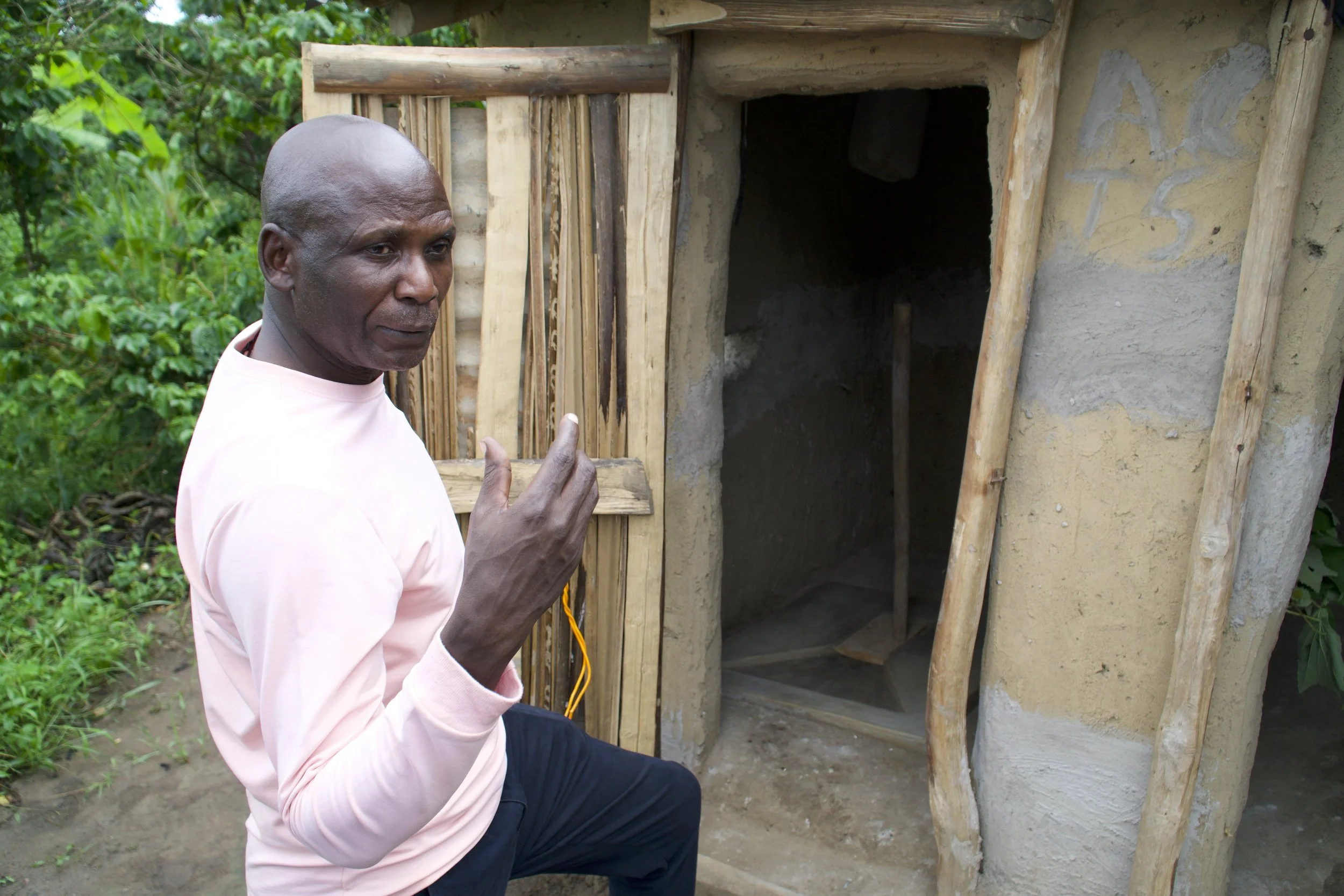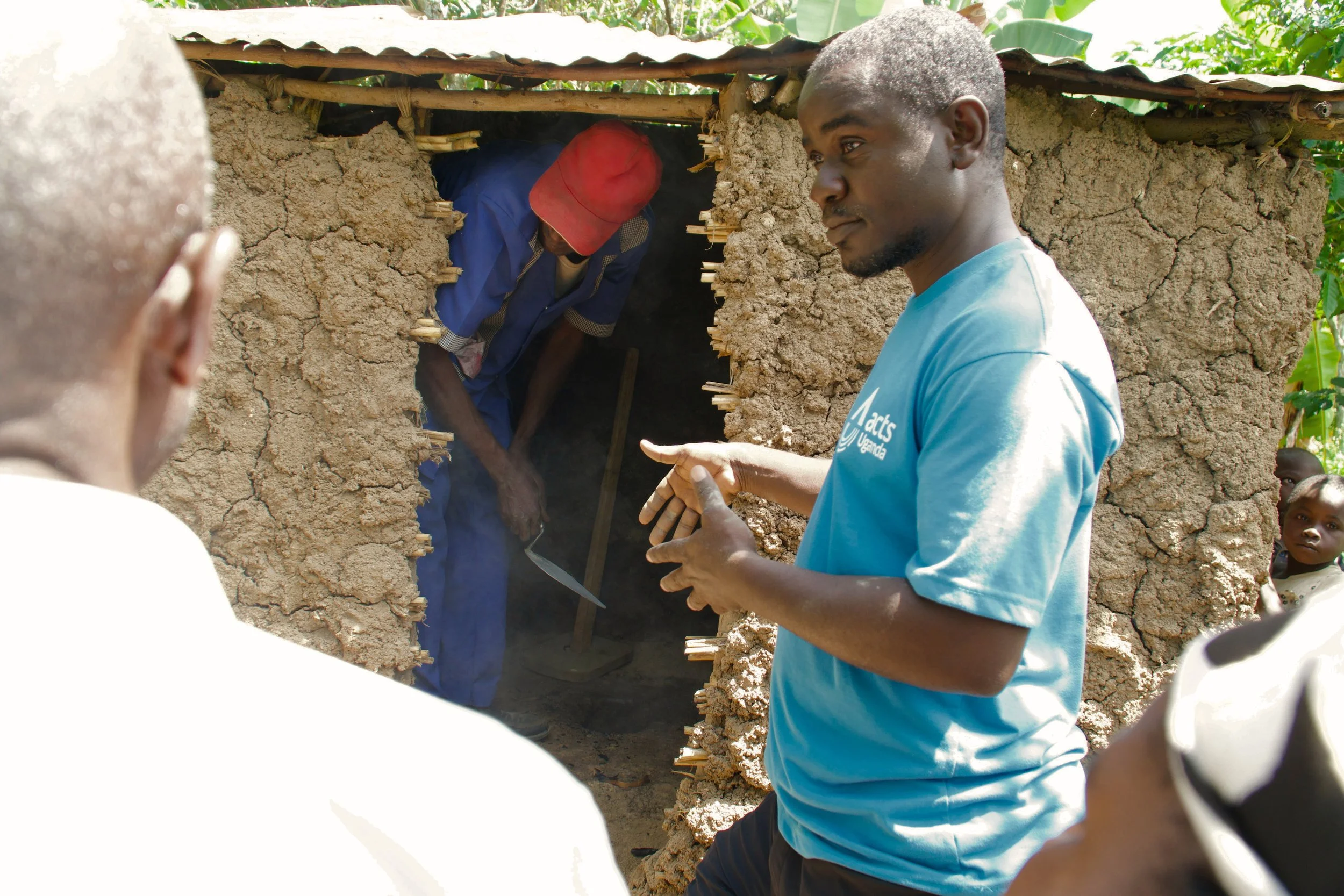Low cost, lasting change
In Uganda, pit latrines are undergoing a revolution
To save lives in Uganda, you don’t need to be a doctor or an engineer or have any special equipment. In fact, you don’t even need a lot of money. One dollar will do. In Uganda, that's the cost of making the floor surface of a latrine washable, more user-friendly, and ultimately safer.
Above: latrine pit floor workshop led by ACTS Uganda in Ruhara Hill, Uganda
The challenge
3.5 billion people worldwide don’t have access to safe sanitation facilities, according to the World Health Organization & UNICEF Joint Monitoring Programme (JMP). Of these, some 419 million practice open defecation in fields, rivers, or gutters due to limited infrastructure. This makes their communities more vulnerable to diseases and conditions such as cholera, diarrhea, typhoid, dysentery, polio, hepatitis A, and childhood stunting. A case in point is Uganda, home to approximately 47 million people, where 38 percent of the population earn less than $2 US a day, according to the World Bank. The UN estimates that less than 20 per cent of the country’s population uses facilities that safely dispose of human waste.
The call to action
These numbers are precisely what motivated Africa Community Technical Service - Uganda (ACTS) to intervene, explains Toby Gould, CAWST’s director of WASH technology, who attended the Africa Learning Exchange (LEX) in December 2024—hosted by Aqua Clara Kenya and sponsored by CAWST. “There has been a big worldwide push in the past 15 years for households to dig their own latrines, which many people in Uganda have done. But too many of them had mud floors, which were difficult to keep clean, making the latrine unsanitary, unsafe, and unpleasant to use.”
What was presented at the learning exchange was a solution requiring three simple materials—3 kg of cement, water, and a bucket of sand. That’s all you need to upgrade a latrine to have a concrete floor, making it easier to clean while increasing its durability, lifespan, and use.
“A washable concrete floor reduces the risk of disease transmission by preventing pathogen buildup and helps manage waste more effectively,” explains Richard Musinguzi, executive director of ACTS Uganda, adding that in his project area, about 11,000 latrines have been improved by the addition of concrete floors. As for the latrine’s lifespan, Musinguzi estimates they should now last nine to 12 years.
Above: Richard Musinguzi, executive director of ACTS Uganda, showing a well-consturcted latrine in Ibanda District, Uganda
According to Musinguzi, who has witnessed the construction of longer-lasting latrine floors, other benefits include:
Ease: Each concrete floor takes about two hours to build.
Simple skills: The washable floors can be built by local construction workers or artisans whom ACTS trains so that the floors meet hygiene and durability standards.
Affordable: The cost is low because they are designed using affordable, locally available materials.
Improved water supply: Reliable pit latrines can have a positive impact on groundwater and therefore drinking water, if they are built a suitable distance from water sources.
Children’s well-being: So much of a toddler’s life is spent crawling along floors and then putting their hands in their mouths. Safe water, washable floors in pit latrines, handwashing facilities, and basic sanitation are all needed to help make them safe.
Follow-up: Employees, field staff, and community members will regularly monitor the project’s progress with surveys, site visits and interviews.
Ability to scale up: If the adoption and community-engagement rates are high and improvements in sanitation and health increase, this is a project that could easily expand.
Above: Ronnie Musoke, WASH mobilizer with ACTS Uganda, leads a latrine pit floor workshop in Ruhara Hill, Uganda
What’s next?
“Right now, we are focused on helping villages in Uganda attain the Open Defecation Free status,” explains Musinguzi, “a program launched by the Ministry of Health and the Ministry of Water and Environment. The idea of a washable latrine floor is so simple, and the cost is so low, we firmly believe it will succeed.”
Show your support for our global community of action with a donation. We’re stronger together.
Africa Community Technical Service, commonly known as ACTS Uganda, is one of CAWST’s partner organizations. They are a non-profit international organization focused on WASH initiatives across six districts in southwestern Uganda: Rwampara, Ntungamo, Isingiro, Ibanda, Kasese, and Bunyangabo. Established in 1982, ACTS Uganda is committed to enhancing access to WASH services in underserved communities.
Find out how our partners in Africa are coming together to take action, with support from CAWST. Read more about the learning experience and outcomes from the Africa learning exchange in the article: A shared mission across borders.
If you’d like to know more about the stories behind the scenes of our work around the world, subscribe to our Global Notebook series. You’ll be the first to receive updates and learn from our team as they travel worldwide—providing training and consulting to help organizations, communities, and individuals access safe water, sanitation, and hygiene.
Check out the sanitation collection in our free online library. It includes resources for sanitation in emergencies, workshop materials for latrine design, and lots more.
Our heartfelt thanks go to Rotary Club of Calgary Downtown for their essential support in making the Africa learning exchange a success. The relationships formed and the knowledge shared will ensure that this initiative leads to sustainable, long-term improvements in water, sanitation, and hygiene practices across Africa and beyond.



